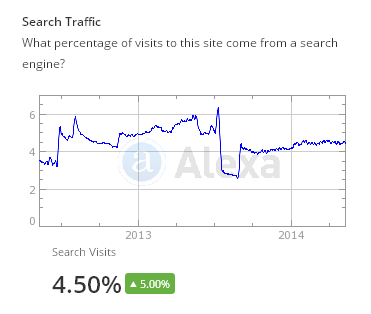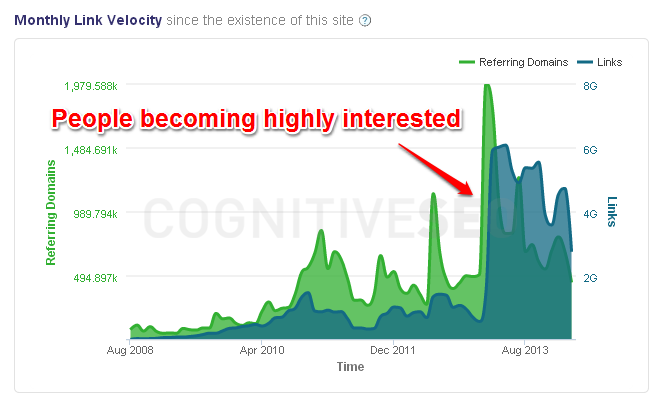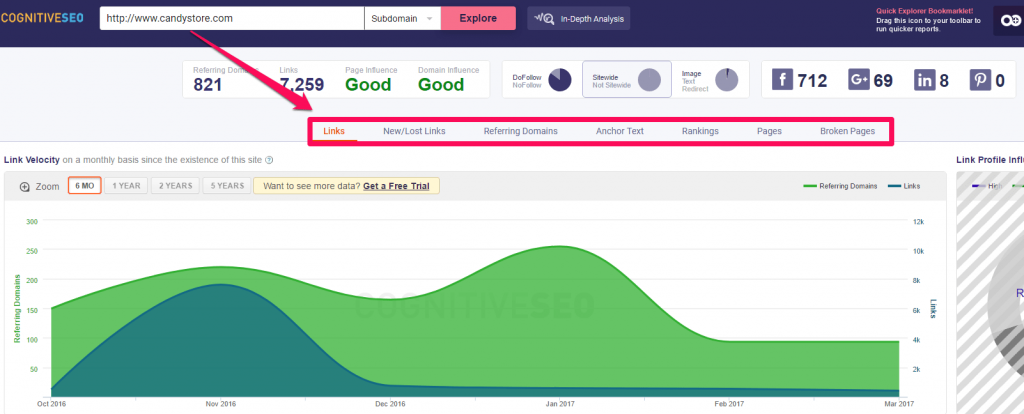No matter what type of business you have, there is always going to be competition. Even if you’re a leader in your domain or you’re just a start-up, you should always keep a close eye on the competitors. Easy to say, hard to do, right?
In the online world, some may argue that this task is easier since everything is just a click away and there are so many tools to spy on your competition. I could be, but if you don’t know what to look for and more importantly who to look for, everything is in vain.
In the following post, we are going to tackle six unique and easy to implement processes to spy on your competitors. This way you will know exactly what your opponent is doing and you will figure out the best ways to outrank your competitors by using the best analysis tools.

There is a common business saying that states you should focus more of your energy on improving your own business and less on watching others. While this is true when it comes to the offline actions, we believe it’s essential to do a competitive research for the online presence.
Think only at the fact that if you’re not in top 10 for organic search for your most important keywords, your chances are pretty slim to interact with potential customers. And if you are in those top 10, who are the other 9 ranking for the same keywords as you?
Efficient Steps to Spy on Your Competitors
What strategies have your competitors been using, what business plans did they implement and what processes have they deployed in the past to get there? The following steps may give you some great insights regarding what works and what doesn’t in your industry.
We’ve written another blog post where we are giving you details on some competitors spying techniques by the book. What we are trying to present you in this blog post are the most efficient and easy to implement “spying” steps:
- Identify and classify your competitors
- Seek advantages in your competitors past evolution
- Outsmart your competition by following each step they make
- Identify growth opportunities in your competitors’ social media strategy
- Discover your competitors SEO strategy to be one step ahead
- Monitor your competitors continuously to outrank them
1. Identify and Classify your Competitors
Who are your competitors ? this is the first question you should seek answers to. Without this vital information you can’t go any further with your competitive analysis. There are a couple of things that you should keep in mind to discover your competitors – you don’t have to create a comprehensive list with all the competition. You just need to select the most important competitors that you are interested in monitoring.
Keep in mind, the process of selecting your competitors is not through SEO. You need to use your knowledge and expertise in your niche to identify them.
It’s also important, depending on the industry, to classify your competitors. You should split them into two main categories:
- Direct competitors – here you’ll place the most important competitors that are in the same category as you. ( they are also called brand competitors ). Usually they have products that are similar to yours.
- Indirect competitors – companies that develop products/services that can substitute yours. They are also important because you’re competing at fulfilling a need, not selling a product. Don’t look at what product/service you provide, but the problem that you solve for the customer.
You shouldn’t focus on your keyword competitors. You don’t want to slide on this slippery slope, because you’ll end up in an endless pursuit of happiness that will cost your company a lot of resources. You may end up competing with hundreds of competitors’ websites. In the end you should have a list of maximum 10 competitors that are relevant to your niche.
2. Seek Advantages in Your Competitors’ Past Evolution
Usually, you find possible strategies for the future by looking at past evolutions. The data from previous online interactions is the most important starting point. Understanding their previous decisions regarding their strategies sheds some light on what gave them an advantage or what backfired.
You can look for all sorts of data. How people talked about your competitors. What were the tipping points of your competitors in time and how people linked to them.
You can also see what your competitors were most focused on. To do this you should quickly run a few backlink explorer reports and check their link velocity. I always do this in order to understand if a site is still trending or has lost it’s interest to its users.
The monthly link velocity can be read like a trend for a site. If for one reason or another, people stop linking to your site it might mean your business, or your competitor’s business, is not that “interesting” anymore.
Another good tool to to spy and monitor competitors would be Alexa. You can see the evolution in time of your competitors and what are their strong areas. On what keywords they focus on for ranking.
Going through your rivals’ keywords for both organic and paid results can give a significant boost to your SEO and PPC presence. – Alexandra Tachalova, Digital Marketing Consultant
Lastly, you can see from where their traffic comes and what they prefer to visit. Using this technique will help you make a comprehensive competitor analysis.

3. Outsmart Your Competition by Following Each Step They Make
Don’t be shy to stalk your competitors’ sites! You can spy on your competition, to analyze their site and their offers. This means you want to come prepared to the fight and … be sure … they are doing it too. Leaving aside the unjustified shame, you should go, try to experience their promotional offers every time they appear.
All over the internet, you can find lots of monitoring tools with different features such as keyword research, media monitoring, competitors ad monitoring, web rankings and so on.
There are plenty of good reasons to see what competitors are doing. You can find out if competitors are doing anything better than you and how you can match it and improve your own plans to beat the competition based on data rather than assumptions. – Chris Kilbourn, CEO of TOFU Marketing
OK, this might not be the most orthodox method, but it pays off:
Create a fake persona and sign up for their updates and newsletters to learn about their communication style and their promotions. How are their offers different from yours and how are they trying to add value to their product/service. Create various accounts on their system to understand their user flow. See how intuitive is their system compared to yours.
Another thing that you need to do is to contact their support to understand how they treat the customers, and also get better to beat the competition.
4. Identify Growth Opportunities in Your Competitors’ Social Media Strategy
Social media strategies are something worth watching closely. If they’ve applied successful strategies, it’s definitely worth figuring out on what platforms they are very popular. Finding the right social network on which your target audience is the most receptive is essential, so you’ll know where to direct your efforts.
You need to know that using the right channel of communication via social media is done through trial and error most of the time. So why not assimilate this information from your competitor’s past experiences. You might find out some insights that even they didn’t observe in the first place.
cognitiveSEO is an example of a tool for monitoring social content amongst other in-depth data analysis features it has. Directly from the tool, you can spot content marketing strategies that work in your niche, audit your content through the power of social shares and spot your site’s strengths and weaknesses using the side-by-side comparison.

Brandmentions, a great alternative for Google Alerts, is another tool that allows you to monitor each social mention of your competitors in real time through an individual analysis.
The valuable data that you get from dissecting your competitors social media strategies can help you a lot. You can skip through the “trial and error” part of the process. You need to understand the networks and the important metrics.
See what is the most shared content and what type of content works on that certain social network.
This is another important aspect of your inquiry, as it will tell you if you should focus on text, photo, link or video type of content. Take your time and understand who their followers are and where are they coming from. It’s essential for your success, because in the end you share almost the same target audience.
5. Discover Your Competitors SEO Strategy & Be One Step Ahead
After you’ve pinpointed your competitors and you’ve done the research about their offers and their social media strategies you need to enquire about their SEO approach. You should start with a full backlink audit on their site and extract the most vital information.
In order to understand their link building strategies you need to take everything into account from the provenance of the links to the anchor texts. The provenance of the links can offer you powerful information regarding the influence of the domain, and the anchor text helps Google understand what is that link about.
It’s also vital to know what you’re going to do with your competitive data. Changing your entire strategy just because you find a competitor doing something different doesn’t make much sense. – Johnathan Dane, Founder KlientBoost
That is why you have to monitor backlinks and look for competitors keyword opportunities. You need a link prospector in order to reveal a competitor’s backlinks. For a quick review of your competitors’ websites, you can use the Site Explorer. A site’s performance can be simply measured with Site Explorer. In the picture below you can see what information is displayed: links, rankings, anchors texts and many other.
A more complex backlinks analysis can be found within cognitiveSEO’s Inbound link analysis. The nice part is you can find all sort of information about an inbound link that is yours, or your competitor’s. The competitors’ analysis features also allows you to know which common and uncommon links you have with your competition.
This way you can easily see what websites link to your competitors and get inspired by there. This means tons of linkbuilding opportunities for you. More about this technique can be found here.

It’s also worth checking into their SEO strategy to understand their penalty risk in Google due to bad practices. You can understand if they have some sort of shady SEO campaign going on. Once you know that the site’s links profile is shady it’s only a matter of time until Google catches and penalizes them.
A major source of information are the links pointing to their site. Get some data regarding the categories of websites that point to that site. And you should also inquire on what type of link it is. If it’s from a forum comment, if it’s in content or if they are site-wide.
Analyze the content they have on the site. You’re going to gain knowledge about what content marketing strategy works best for them. It might work as well for your site. Search for the most engaging content to see what’s interesting for the visitors and seek their best organic keyword to see what are they ranking for. cognitiveSEO, also lets you know which keywords your competitors are targeting.
6. Monitor Your Competitors Continuously to Outrank Them
What we’ve presented in the points above are not one – time processes. You should continuously check and monitor your competition to stay up to date with their search marketing strategies and how they work. You need to know that you have to be on top of your game every time. You may never know when a competitor may start a campaign that will get them straight on the number one place.
Since there are no perfect strategies on tracking and analyzing competitors, I’ve compiled a quick list. You should try to check every point in this list every time you want to create a complete analysis on your competition.
- Track their site structure updates.
- Track their social profile evolution.
- Track their product updates and new offers.
- Track their new links.(you could use some e-mail alerts to be notified when this happens)
- Track their rankings increases and decreases.(same e-mail alerts work here also)
- Track their Alexa growth.
Conclusion
In a world that integrates better than ever, the traditional offline marketing with the omnipresent online marketing, companies should track their competition more than ever with the help of online tools specialized for SEO analysis.
The difference from one rank or another in the search engines can mean a lot of possible clients. It’s only normal that in the online environment you should closely track & spy on your competitors. Competitive intelligence is incredibly important in order to improve your strategies. The SEO tools can come really in handy for a quick and exhaustive analysis.
Use the processes and powerful tools presented in the article to stay on the top of your game!
Sometimes you don’t need very advanced tools to have an overall picture of your niche. It’s important to be connected to your Google Analytics account, to first know your traffic sources before trying to reveal your competitor’s marketing strategy.
As you can see above, there are some six relatively easy steps you can follow to outrank your competitors. Success is no accident. It is hard work, perseverance, learning, studying, sacrifice and most of all, love of what you are doing or learning to do.

 Site Explorer
Site Explorer Keyword tool
Keyword tool Google Algorithm Changes
Google Algorithm Changes





Spying on your competitor is a great strategy. All you need to do is make better on what their doing.
Indeed! And remember that to beat the competition you need to rely on data rather than assumptions 😉
Step 1: Analyze you competitors
Step 2: Copy their best practices
Step 3: Take advantage of their mistakes
Working all the time!
Great tool to help business stay one step ahead of their competitors. Studying social media profiles and backlink strategy of the competitors reveal a lot about their content strategy and these days content is the king.
Loved the article. Have got few definitive pointers there. But is it possible to structure in a way so not give away all strategies to competition?
Another good option is to target competitors’ audience. It’ll solve many problems. You’ll lower CPC, attract more customers to your business, increase ROI, sell more products.